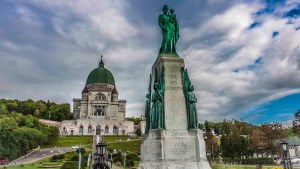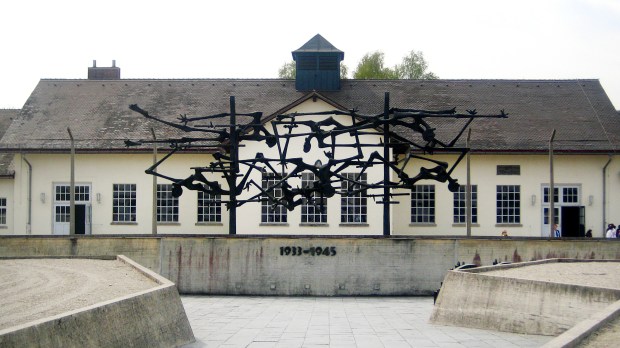It was one of the most evil places our world has seen. At the site of an old munitions factory about 10 miles outside of Munich, the Dachau concentration camp began operation on March 10, 1933. It was the first of the infamous Nazi confinement facilities and would have the longest tenure, lasting until April 29, 1945, when U.S. forces liberated the surviving inmates.
Over the course of 12 years, the Dachau camp received more than 200,000 prisoners, about 3,000 of whom were Catholic clergy. Dachau was the most popular confinement setting for clergymen (most of them Roman Catholics, though there were smaller numbers of Protestants and Orthodox Catholics) who had voiced opposition to the Nazi regime.
In April 1945, as Allied forces were about to topple a crumbling Nazi empire, the priests and monks at Dachau were almost certain the Nazi guards were going to round them all up and kill them. On April 22, 1945, these clergymen, the majority of whom were ethnic Poles, consecrated themselves to St. Joseph (husband of Mary, father of Jesus) and vowed that, if they escaped death, they would make a yearly pilgrimage to the St. Joseph Shrine in Kalisz, a city of about 100,000 persons in central Poland.
There was good reason to fear a mass execution: In fact, Reichsführer-SS Heinrich Himmler, the second-most powerful Nazi, had ordered the extermination of all Dachau prisoners on the evening of April 29. However, just a few hours before the Nazis were to undertake a mass execution, the first unit of U.S. soldiers came to liberate the prisoners.
As ensuing U.S. forces arrived, they were accompanied by members of the media. Through words, pictures, and newsreel, these reporters were able to document the almost unreal depravity into which human beings can sink.
The total number of deaths at Dachau was far less than the number at the extermination camps in Nazi-occupied Poland. That said, many thousands of Dachau inhabitants perished, typically through disease and malnutrition. Another cause of death was medical research.
Dachau was a center of Nazi medical experiments, which meant the inmates served as human guinea pigs for procedures that were often as agonizing as they were lethal. Priests were frequent fodder for research conducted by Professor Claus Schilling, who purposely infected his human subjects with malaria in order to assess the effectiveness of various potential methods of treatment.
More ghastly yet was Schilling’s research on the effects of: submersion in near-freezing water, drastic changes in air pressure, consumption of massive amounts of seawater, and the deprivation of food and water altogether.
Even for those who avoided the experiments, Dachau was a torment. Hunger, typhoid, and hard labor were the routine. Other activities consisted of having to prostrate oneself in the mud, with Nazi guards making a point to stomp the heads of those who failed to muddy themselves sufficiently.
Under such conditions, both life and faith still managed to endure. The priests often held Mass surreptitiously. Resources were so deprived that hosts were broken into 20 or more pieces so that everyone present could receive the Eucharist. Also impressive was that the Dachau clergy managed to operate a secret divinity school.
The clergymen (a total of 856 survived, though some had suffered such mistreatment that they were unable to continue their pastoral duties) who emerged from Dachau were convinced that St. Joseph had interceded on their behalf. Fulfilling their promise, each April 29, to commemorate their day of liberation, they visited the St. Joseph Shrine in Kalisz (which was established around the year 1670, soon after a nearby villager credited his recovery from illness to the intercession of St. Joseph).
In 1970, the surviving priests built a Chapel of Martyrdom and Gratitude at Kalisz to commemorate their 1,800 brother clerics who died at the camp. A ceremony to mark the chapel’s completion was attended by then-Cardinal Karol Wojtyła, who later became Pope John Paul II.
As pontiff, His Holiness returned in 1997 to Kalisz, where he commended the remaining Dachau priests for having kept their debt of gratitude to St. Joseph. Aside from expressing gratitude, the priests continued to visit the shrine to pray for those who perished at Dachau. They also prayed for their former tormentors at the concentration camp, such as Prof. Schilling, who was executed by hanging for his atrocities.
As of 2018, the Church has beatified 56 Dachau clergy, and additional cases are under consideration.

Read more:
The churches around the world named for St. Joseph

